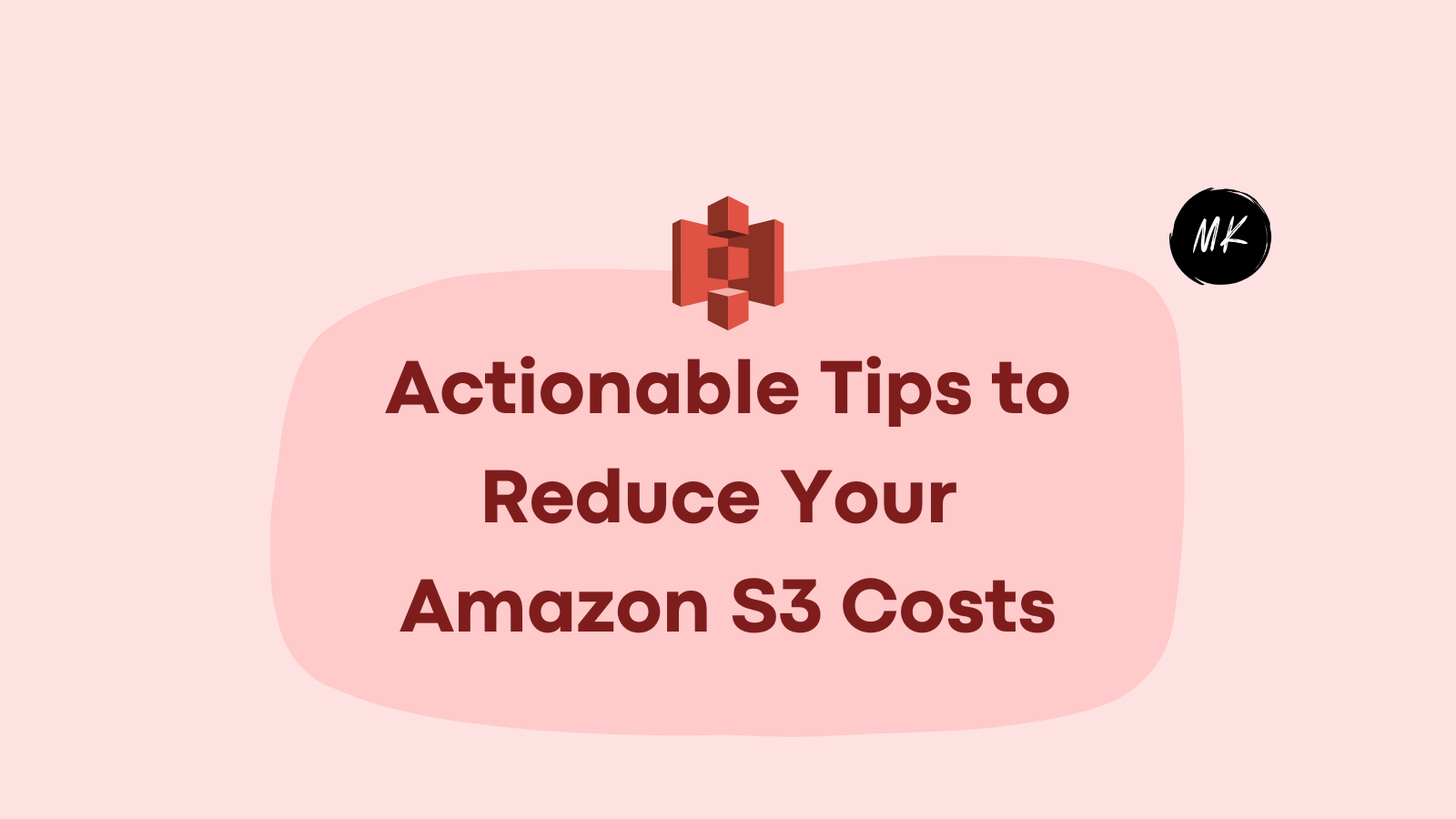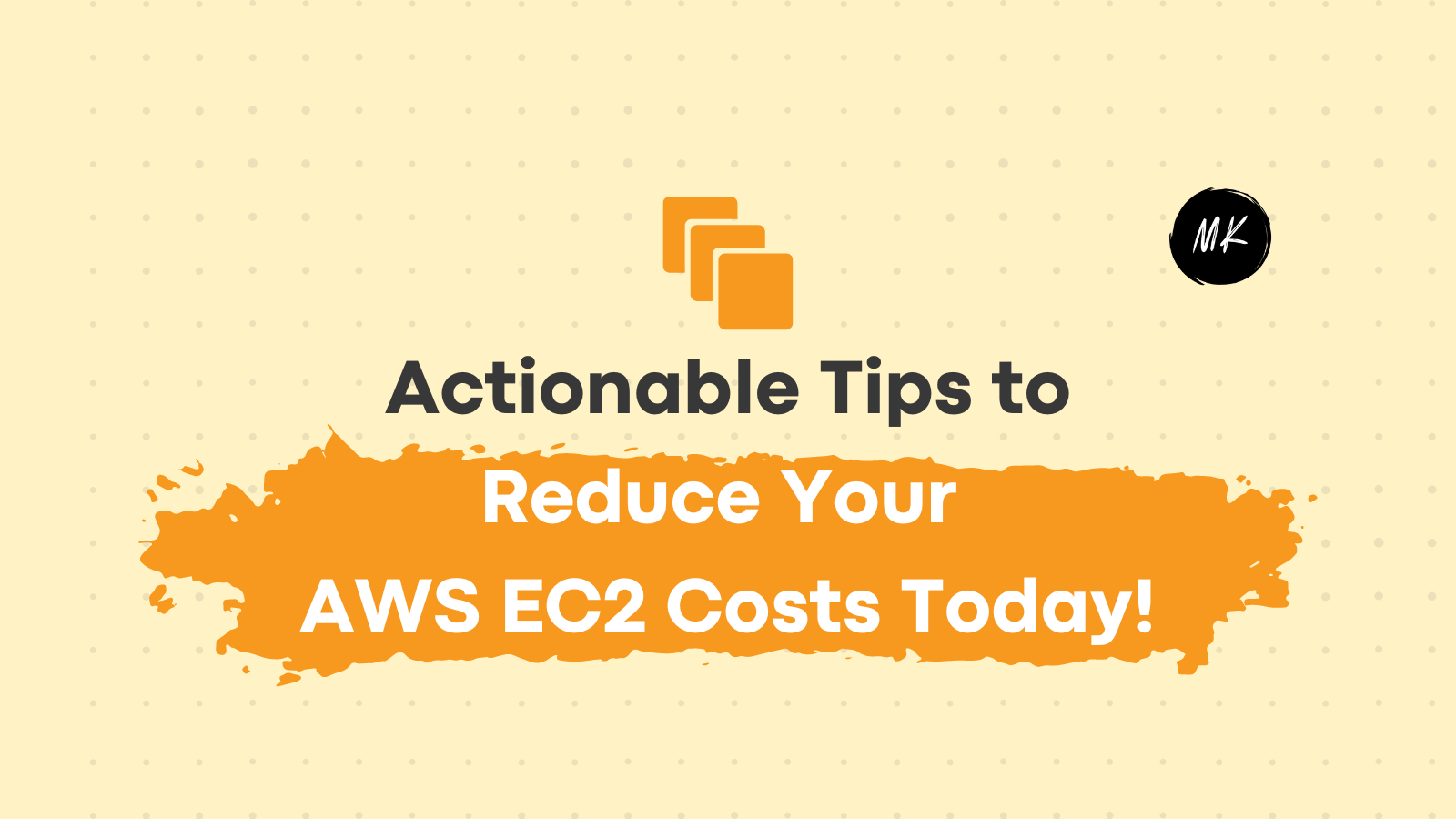7 Actionable Tips to Reduce Your Amazon S3 Costs Today!

Introduction
Amazon Simple Storage Service (S3) is a cloud-based object storage service provided by Amazon Web Services (AWS). It offers scalable, secure, and durable storage for data in the cloud.
S3 is designed to be highly available, allowing you to store and retrieve any amount of data from anywhere in the world. It is widely used by businesses and individuals for various purposes, including backup and archiving, big data analytics, and content delivery.
In this blog post, we will explore actionable tips to reduce Amazon S3 costs.
Use Cases for Amazon S3
S3 is a versatile storage solution that supports a wide range of use cases for businesses and individuals. Here are a few examples of how S3 is used in the real world:
- Media storage: AWS S3 is a popular choice for storing media assets, such as images, videos, and audio files, for use in websites, mobile applications, and streaming platforms. Its durability and scalability make it a reliable option for storing large amounts of media content.
- Backup and recovery: S3 is a useful tool for backing up and recovering data in case of a disaster. It can be configured to automatically replicate data across different regions, providing an added layer of redundancy. This feature makes S3 a popular choice for businesses that need to ensure the availability of critical data.
- Website hosting: S3 can host static websites such as blogs or portfolio sites. Businesses can store HTML, CSS, JavaScript, and other files in S3 and configure it to serve website content to users. This can be a cost-effective and scalable option for businesses looking to host simple websites without the need for server infrastructure.
- Content Delivery: S3 can serve as an origin server for Amazon CloudFront, a content delivery network that provides low-latency and high-transfer-speed content delivery to users. This capability can help businesses deliver content, such as videos and images, to users worldwide with minimal latency.
- Data archiving: S3's cost-effective storage options make it a popular choice for long-term data archiving. This can include historical data, regulatory data, or other types of inactive data that businesses may need to keep for compliance or legal purposes.
Factors Contributing to High Amazon S3 Costs
S3 can be a cost-effective storage solution for businesses, but bills can quickly increase if not managed carefully. Here are a few major areas where S3 bills generally increase:
- Data transfer costs: Businesses may face high costs when transferring data to and from S3, particularly when moving data across different regions or relying on third-party services. These costs may include expenses for data transfer out, data transfer acceleration, and data transfer between different AWS services.
- Storage costs: S3 offers several storage classes with different pricing tiers. However, businesses may incur high storage costs if they do not properly manage their data. This includes storing unnecessary data, using the wrong storage class, or not implementing data lifecycle policies.
- Request costs: S3 charges businesses for every request made to the service, including GET, PUT, COPY, and DELETE requests. If a business has a high volume of requests, especially for small objects or frequently accessed data, they may incur high request costs.
- Cross-region replication costs: Although cross-region replication can be a valuable feature for disaster recovery and data redundancy, it can also result in additional costs. Businesses may incur expenses for data transfer between regions, as well as for storage of the replicated data.
- Metadata indexing costs: S3 charges businesses for metadata indexing, which is necessary to enable features like object tagging and event notifications. Businesses with a large number of objects that include extensive metadata may incur high metadata indexing costs.
- Lifecycle policy costs: S3 provides lifecycle policies that can automatically transition objects to different storage classes or delete them based on specified criteria. However, businesses may incur costs for lifecycle policy evaluations, especially if they have a large number of objects or complex policies.
- Versioning costs: S3 provides versioning, enabling businesses to store multiple versions of the same object. However, each version of an object may result in additional storage costs, as well as additional request costs for listing or deleting versions. To avoid unnecessary costs, it's important to manage versioning efficiently.
It is important to regularly monitor S3 storage and consumption costs, and identify the factors that contribute to high S3 bills. If high costs are identified, appropriate action should be taken by following the steps below.
Ways to Reduce Costs on AWS EC2 Instances
Choose the right storage class for S3
Using the appropriate storage class for your data can help you save on storage costs. AWS S3 offers different storage classes with varying pricing models, including Standard, Infrequent Access (IA), Intelligent-Tiering, Glacier, and Glacier Deep Archive. Here are the implementation steps:
- To determine the appropriate storage class, identify the usage patterns and access frequency of your data.
- Consider using a combination of storage classes for different data types and access patterns.
- Configure lifecycle policies to automatically move data to lower-cost storage classes based on access patterns and age.
- Monitor and adjust the usage of storage classes based on changing data access patterns.
Optimize data transfer
Data transfer costs can quickly add up, especially when transferring large amounts of data or using third-party services. Here are some steps to implement to help mitigate these costs:
- Consider using AWS Direct Connect or AWS Storage Gateway to reduce data transfer costs and improve performance.
- Use AWS Transfer Family to manage and secure file transfers without incurring additional data transfer costs.
- Consider using either AWS Snowball or AWS Snowmobile for large-scale data transfers.
- Monitor and optimize data transfer usage to avoid incurring unnecessary costs.
Use S3 Transfer Acceleration
S3 Transfer Acceleration utilizes Amazon CloudFront's globally distributed edge locations to speed up transfers over the public internet. This can reduce transfer times and, potentially, lower costs. Here are the steps to implement it:
- Enable S3 Transfer Acceleration on your S3 bucket.
- Test S3 Transfer Acceleration to ensure it provides the expected benefits.
- Monitor S3 Transfer Acceleration usage and adjust as needed based on changing needs and usage patterns.
- Consider using S3 Transfer Acceleration in conjunction with other optimization techniques, such as multi-part uploads, to further improve transfer performance.
Use object tags and metadata wisely
Using object tags and metadata can help you better organize and manage your data, but it can also result in additional costs. Here are some steps to follow when implementing them:
- To ensure consistent use of object tags across your S3 buckets, define a clear tagging strategy.
- Use metadata only when necessary for specific use cases, and avoid excessive use.
- To track and allocate S3 costs to specific business units or applications, you can use AWS Cost Allocation Tags.
- To avoid unnecessary costs, monitor and optimize the usage of tags and metadata.
Optimize object and version management
Managing objects and versions can result in additional costs, especially if you have a large number of objects or complex versioning policies. Here are some steps to implement:
- Use S3 inventory to analyze and manage objects and their versions.
- Configure lifecycle policies to automatically transition objects to lower-cost storage classes or delete them based on access patterns and age.
- Use versioning sparingly and only when necessary for specific use cases.
- Monitor and optimize object and version management to avoid unnecessary costs.
Use S3 Lifecycle policies
S3 Lifecycle policies allow for the automation of object transitions between different storage classes, as well as the deletion of unnecessary objects. Here are the steps for implementing them:
- Define S3 Lifecycle policies based on your data retention and access requirements.
- Use S3 Lifecycle policies to transition objects to lower-cost storage classes based on their access patterns.
- Use S3 Lifecycle policies to automatically delete objects that are no longer needed or that meet specific criteria, such as being a certain age or version.
- Monitor and adjust S3 Lifecycle policies based on changing needs and usage patterns.
- Use S3 Intelligent-Tiering to automatically move objects between two access tiers based on changing access patterns.
Use S3 Select and S3 Inventory
S3 Select and S3 Inventory can help reduce costs by enabling you to retrieve and analyze only the necessary data. Here are some implementation steps:
- Use S3 Select to retrieve only the necessary data from large objects stored in S3.
- Use S3 Select to filter and aggregate data, reducing the amount of data that needs to be transferred and processed.
- Use S3 Inventory to generate reports on your S3 usage, allowing you to better understand your data and identify potential cost-saving opportunities.
- Use S3 Inventory to identify and delete unnecessary data, reducing storage costs.
- Monitor and adjust S3 Select and S3 Inventory usage based on changing needs and usage patterns.
These are just a few actionable tips to reduce S3 costs. By following these tips and continuously monitoring and optimizing your S3 usage, you can save money and better manage your data.
Steps Recommended by AWS to Save and Monitor Amazon S3 costs
AWS provides various tools and best practices to help businesses save and monitor S3 costs. Here are a few recommended steps:
- Use AWS Cost Explorer: AWS Cost Explorer is a tool that allows you to visualize and analyze your AWS costs. It provides a detailed breakdown of S3 costs, including storage, data transfer, and requests.
- Set Up Cost Budgets: AWS Budgets can help businesses set up cost alerts and notifications for their S3 usage. This allows them to stay within their budget and avoid unexpected cost spikes.
- Use AWS Trusted Advisor: AWS Trusted Advisor provides cost optimization recommendations for Amazon S3. It suggests enabling versioning and implementing lifecycle policies. Additionally, it helps businesses identify potential security vulnerabilities and performance issues.
- Use AWS CloudFormation: AWS CloudFormation can automate the deployment and management of various AWS resources, including S3. This can result in reduced costs and improved resource management efficiency.
Conclusion
S3 is a powerful and versatile storage solution offered by AWS. However, costs can quickly add up if not managed carefully. By following the actionable tips and best practices outlined in this article, businesses and individuals can reduce their S3 costs while still enjoying the benefits of scalable, secure, and durable cloud storage.
Regularly monitoring S3 costs and using AWS tools such as Cost Explorer, Budgets, and Trusted Advisor can help businesses identify cost optimization opportunities and make informed decisions about their S3 usage.
It's important to remember that S3 is just one of many AWS services. Therefore, businesses should consider their overall AWS usage and costs when evaluating their cloud storage needs. By taking a holistic approach to cloud cost optimization and management, businesses can achieve significant cost savings while still enjoying the benefits of AWS's powerful suite of cloud services.
Learn actionable tips to reduce AWS EC2 instance costs today! 👇


